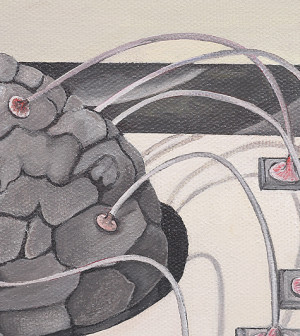- Navigating Your Midlife Crisis: Embracing New Possibilities
- City Raccoons Showing Signs of Domestication
- Mapping the Exposome: Science Broadens Focus to Environmental Disease Triggers
- One Week Less on Social Media Linked to Better Mental Health
- Your Brain Changes in Stages as You Age, Study Finds
- Some Suicide Victims Show No Typical Warning Signs, Study Finds
- ByHeart Formula Faces Lawsuits After Babies Sickened With Botulism
- Switch to Vegan Diet Could Cut Your Greenhouse Gas Emissions in Half
- Regular Bedtime Does Wonders for Blood Pressure
- Dining Alone Could Mean Worse Nutrition for Seniors
Human-Type Epilepsy Discovered in Sea Lions


When exposed to a certain toxin in algae, sea lions develop a form of epilepsy similar to that in people, a new study says.
Domoic acid — which can cause tremors, convulsions, memory loss and death — is produced by algae blooms and accumulates in small fish that sea lions eat. Every year, hundreds of sea lions affected by domoic acid are washed up along the California coast.
Researchers examined the brains of 14 dead sea lions that had epilepsy caused by domoic acid and compared them to the brains of nine sea lions that died from other causes. The sea lions with epilepsy had about 50 percent fewer neurons in the hippocampus (the brain’s memory center) than the other sea lions.
“We found there was a loss of neurons in specific patterns that closely matched what is found in people. And there is synaptic reorganization — a rewiring of surviving neurons. This also matches what is found in humans with temporal lobe epilepsy,” study lead author Paul Buckmaster, a professor of comparative medicine at Stanford University, said in a university news release.
The investigators also found that in most of the sea lions with epilepsy, the hippocampus on only one side of the brain was damaged.
“That was really surprising. That is what you find in people — 80 percent of the time the damage is just on one side,” Buckmaster said.
The study appears online March 19 in the Journal of Comparative Neurology.
Further research in sea lions could lead to the development of better treatments for both sea lions and humans, according to Buckmaster.
Temporal lobe epilepsy is one of the most common types of epilepsy in people and has no cure.
More information
The American Academy of Family Physicians has more about epilepsy.
Source: HealthDay
Copyright © 2025 HealthDay. All rights reserved.










